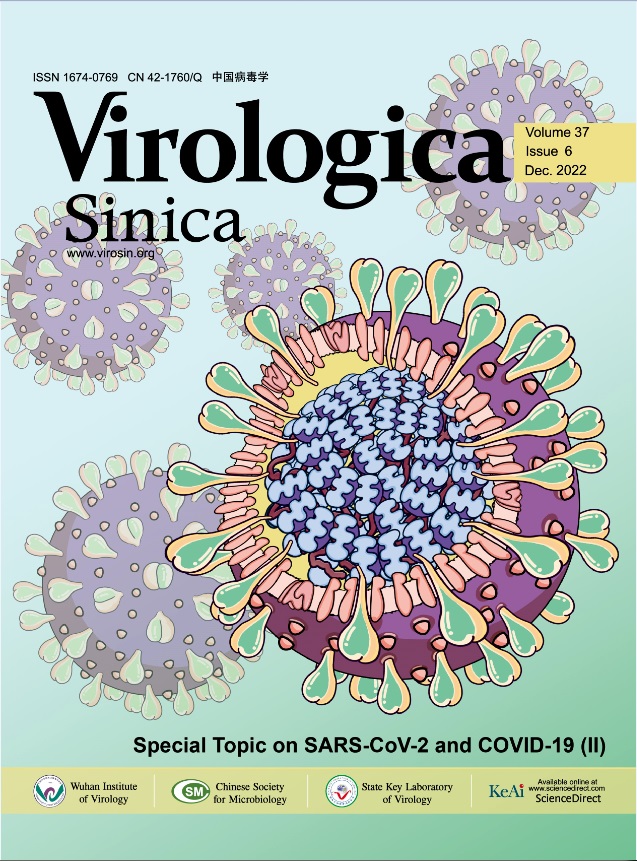-
Brubaker, S.W.B., Zanoni, K.S., Kagan, I., J. C., 2015. Innate immune pattern recognition:a cell biological perspective. Annu. Rev. Immunol. 33, 257–290.
-
Buster, E.H., Flink, H.J., Cakaloglu, Y., Simon, K., Trojan, J., Tabak, F., So, T.M., Feinman, S.V., Mach, T., Akarca, U.S., Schutten, M., Tielemans, W., Van Vuuren, A.J., Hansen, B.E., Janssen, H.L., 2008. Sustained HBeAg and HBsAg loss after long-term follow-up of HBeAg-positive patients treated with peginterferon alpha-2b.Gastroenterology 135, 459–467.
-
Chen, Y., Hu, J., Cai, X., Huang, Y., Zhou, X., Tu, Z., Hu, J., Tavis, J.E., Tang, N., Huang, A., Hu, Y., 2018. APOBEC3B edits HBV DNA and inhibits HBV replication during reverse transcription. Antivir. Res. 149, 16–25.
-
Chen, Y., Shen, B., Zheng, X., Long, Q., Xia, J., Huang, Y., Cai, X., Wang, D., Chen, J., Tang, N., Huang, A., Hu, Y., 2020. DHX9 interacts with APOBEC3B and attenuates the anti-HBV effect of APOBEC3B. Emerg. Microb. Infect. 9, 366–377.
-
Cheng, X.,X.Y., Serti, E., Block, Pd, Chung, M., Chayama, K., Rehermann, B., Liang, Tj, 2017. Hepatitis B virus evades innate immunity of hepatocytes but activates cytokine production by macrophages. Hepatology 66, 1779–1793.
-
Fuchs, S.Y., 2013. Hope and fear for interferon: the receptor-centric outlook on the future of interferon therapy. J. Interferon Cytokine Res. 33, 211–225.
-
Janahi, E.M., McGarvey, M.J., 2013. The inhibition of hepatitis B virus by APOBEC cytidine deaminases. J. Viral Hepat. 20, 821–828.
-
Jiang, S., Zhang, M., Sun, J., Yang, X., 2018. Casein kinase 1α: biological mechanisms and theranostic potential. Cell Commun. Signal. 16, 23.
-
Konerman, M.A., Lok, A.S., 2016. Interferon treatment for hepatitis B. Clin. Liver Dis. 20, 645–665.
-
Kumar, K.G., Krolewski, J.J., Fuchs, S.Y., 2004. Phosphorylation and specific ubiquitin acceptor sites are required for ubiquitination and degradation of the IFNAR1 subunit of type I interferon receptor. J. Biol. Chem. 279, 46614–46620.
-
Kumar, K.G., Tang, W., Ravindranath, A.K., Clark, W.A., Croze, E., Fuchs, S.Y., 2003. SCF(HOS) ubiquitin ligase mediates the ligand-induced down-regulation of the interferon-alpha receptor. EMBO J. 22, 5480–5490.
-
Lauterbach-Rivière, L., Bergez, M., Mönch, S., Qu, B., Riess, M., Vondran, F.W.R., Liese, J., Hornung, V., Urban, S., König, R., 2020. Hepatitis B virus DNA is a substrate for the cGAS/STING pathway but is not sensed in infected hepatocytes. Viruses 12, 592.
-
Liu, J., Carvalho, L.P., Bhattacharya, S., Carbone, C.J., Kumar, K.G., Leu, N.A., Yau, P.M., Donald, R.G., Weiss, M.J., Baker, D.P., Mclaughlin, K.J., Scott, P., Fuchs, S.Y., 2009.Mammalian casein kinase 1alpha and its leishmanial ortholog regulate stability of IFNAR1 and type I interferon signaling. Mol. Cell Biol. 29, 6401–6412.
-
Lu, H.L.L.,F., 2013. Melanoma differentiation-associated gene 5 senses hepatitis B virus and activates innate immune signaling to suppress virus replication. J. Immunol. 191, 3264–3276.
-
Nguyen, M.H., Wong, G., Gane, E., Kao, J.H., Dusheiko, G., 2020. Hepatitis B virus:advances in prevention, diagnosis, and therapy. Clin. Microbiol. Rev. 33, e00046, 00019.
-
Pietro Lampertico, K.A., Berg, Thomas, Buti, Maria, Janssen, Harry L a, George, Papatheodoridis, Zoulim, Fabien, Frank, Tacke, 2017. EASL 2017 Clinical Practice Guidelines on the management of hepatitis B virus infection. J. Hepatol. 67, 370–398.
-
Poh, Z., Goh, B.B., Chang, P.E., Tan, C.K., 2015. Rates of cirrhosis and hepatocellular carcinoma in chronic hepatitis B and the role of surveillance: a 10-year follow-up of 673 patients. Eur. J. Gastroenterol. Hepatol. 27, 638–643.
-
Roers, A., Hiller, B., Hornung, V., 2016. Recognition of endogenous nucleic acids by the innate immune system. Immunity 44, 739–754.
-
Sato, S., Li, K., Kameyama, T., Hayashi, T., Ishida, Y., Murakami, S., Watanabe, T., Iijima, S., Sakurai, Y., Watashi, K., Tsutsumi, S., Sato, Y., Akita, H., Wakita, T., Rice, C.M., Harashima, H., Kohara, M., Tanaka, Y., Takaoka, A., 2015. The RNA sensor RIG-I dually functions as an innate sensor and direct antiviral factor for hepatitis B virus. Immunity 42, 123–132.
-
Schreiber, G., 2017. The molecular basis for differential type I interferon signaling. J. Biol. Chem. 292, 7285–7294.
-
Sommer, A.F., Rivière, L., Qu, B., Schott, K., Riess, M., Ni, Y., Shepard, C., Schnellbächer, E., Finkernagel, M., Himmelsbach, K., Welzel, K., Kettern, N., Donnerhak, C., Münk, C., Flory, E., Liese, J., Kim, B., Urban, S., König, R., 2016. Restrictive influence of SAMHD1 on Hepatitis B Virus life cycle. Sci. Rep. 6, 26616.
-
Terrault, N.A., Lok, A.S.F., Mcmahon, B.J., Chang, K.M., Hwang, J.P., Jonas, M.M., Brown Jr., R.S., Bzowej, N.H., Wong, J.B., 2018. Update on prevention, diagnosis, and treatment of chronic hepatitis B: AASLD 2018 hepatitis B guidance. Hepatology 67, 1560–1599.
-
Van Zonneveld, M., Honkoop, P., Hansen, B.E., Niesters, H.G., Darwish Murad, S., De Man, R.A., Schalm, S.W., Janssen, H.L., 2004. Long-term follow-up of alphainterferon treatment of patients with chronic hepatitis B. Hepatology 39, 804–810.
-
Wang, Y.X., Niklasch, M., Liu, T., Wang, Y., Shi, B., Yuan, W., Baumert, T.F., Yuan, Z., Tong, S., Nassal, M., Wen, Y.M., 2020. Interferon-inducible MX2 is a host restriction factor of hepatitis B virus replication. J. Hepatol. 72, 865–876.
-
Xia, C., Wolf, J.J., Vijayan, M., Studstill, C.J., Ma, W., Hahm, B., 2018. Casein kinase 1α mediates the degradation of receptors for type I and type II interferons caused by hemagglutinin of influenza A virus. J. Virol. 92, e00006–18.
-
Xia, C.A., Hahm, B., P., 2018. Viral dedication to vigorous destruction of interferon receptors. Virology 522, 19–26.
-
Zhao, H., Kurbanov, F., Wan, M.B., Yin, Y.K., Niu, J.Q., Hou, J.L., Wei, L., Wang, G.Q., Tanaka, Y., Mizokami, M., Si, C.W., 2007. Genotype B and younger patient age associated with better response to low-dose therapy: a trial with pegylated/ nonpegylated interferon-alpha-2b for hepatitis B e antigen-positive patients with chronic hepatitis B in China. Clin. Infect. Dis. 44, 541–548.
-
Zheng, H., Qian, J., Varghese, B., Baker, D.P., Fuchs, S., 2011. Ligand-stimulated downregulation of the alpha interferon receptor: role of protein kinase D2. Mol. Cell Biol. 31, 710–720.
















 DownLoad:
DownLoad: